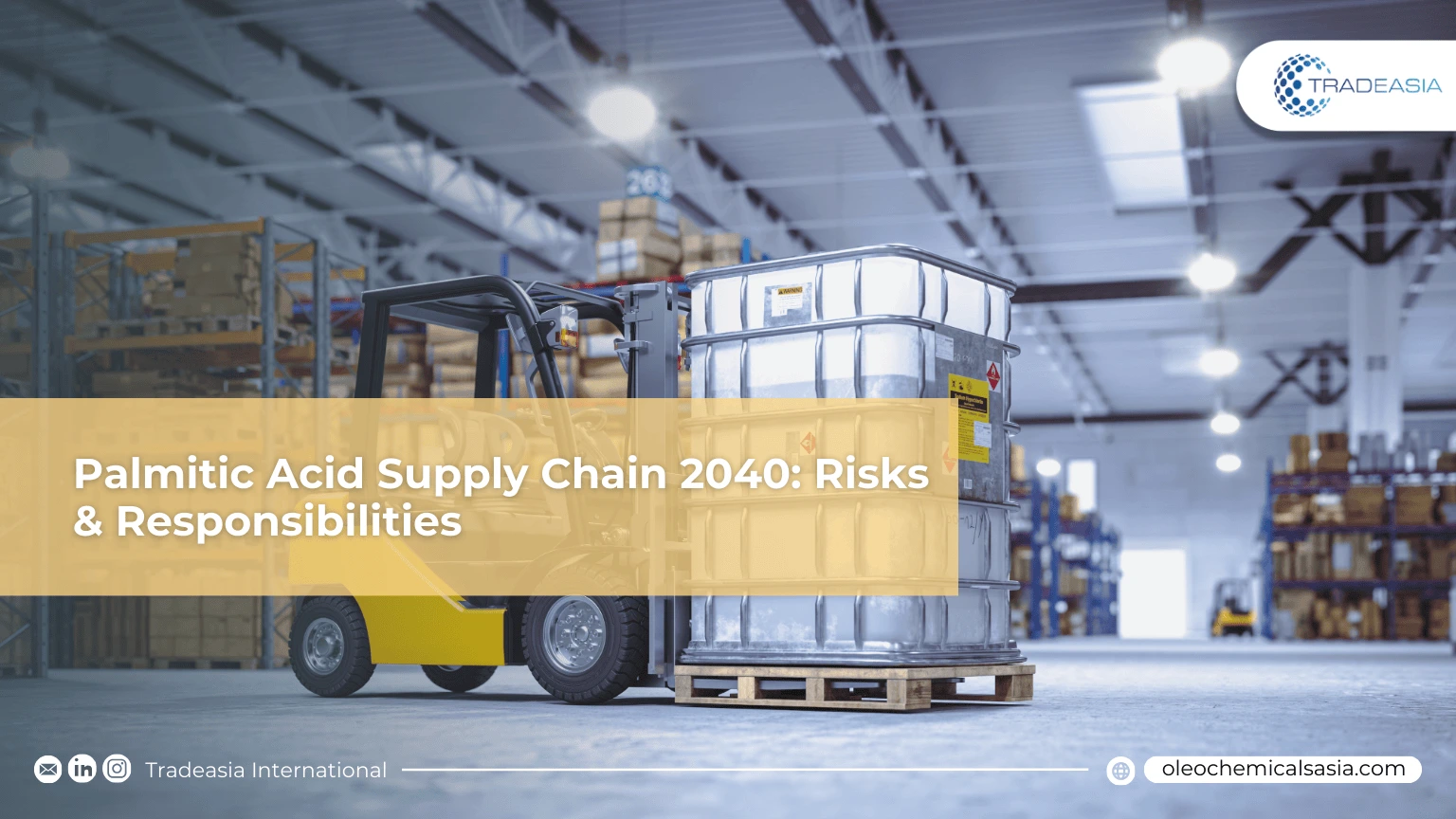The Palmitic Acid Supply Chain Until 2040: Navigating A New Era of Responsibility and Risk

Table of Content
- The Unstoppable Rise of Sustainable Sourcing
- Mastering Volatility in a Dynamic Market
For today’s procurement managers and traders, the palmitic acid market is a complex chessboard where long-term success demands more than just securing supply. The coming decades will be defined by a trio of critical forces: stringent sustainability mandates, the demand for absolute supply chain integrity, and the ever-present reality of price volatility. Mastering these variables is the new benchmark for profitability and market leadership.
At Tradeasia International, we thrive on this complexity. We provide our partners with the end-to-end visibility and risk management strategies essential for navigating the modern oleochemical supply chain, transforming potential challenges into competitive advantages in the palm industry.
The Unstoppable Rise of Sustainable Sourcing
The global supply chain remains anchored in Southeast Asia, with Indonesia and Malaysia producing approximately 85% of the world's crude palm oil. However, the operational conversation has pivoted decisively toward sustainability. According to the Roundtable on Sustainable Palm Oil (RSPO), certified sustainable material now accounts for 19.4% of the global supply, and this is far more than a corporate responsibility metric. RSPO-certified palmitic acid consistently fetches a price premium of $50 to $100 per metric ton. This financial incentive, coupled with studies showing that companies with fully traceable supply chains see a 5-8% boost in brand value, makes sustainable sourcing an undeniable strategic imperative.
Mastering Volatility in a Dynamic Market
Beyond ethics, market volatility remains a formidable challenge. The price shocks of the 2021-2022 period, which saw spikes exceeding 40%, serve as a stark reminder of the market's vulnerability to global disruptions. While analysts forecast a long-term price stabilization with a 2-3% average annual increase, businesses must brace for acute, short-term volatility events. These episodes, potentially causing price swings of up to 25%, can be triggered by anything from adverse weather to sudden policy shifts. In an environment where predictability is a luxury, a trusted partner who can ensure supply continuity isn't just an asset—it's a lifeline. This proactive approach to managing both supply and risk is what separates the leaders from the followers.
Sources:
-
Supply Chain Risk Assessment for Southeast Asian Oleochemicals
-
RSPO Annual Report of Progress & Impact
-
Global Commodity Markets Outlook

Leave a Comment